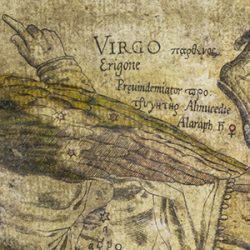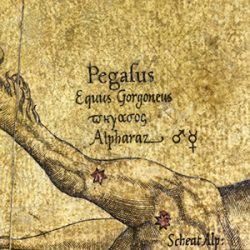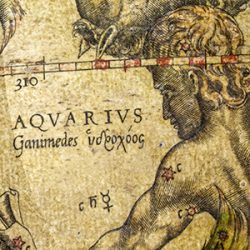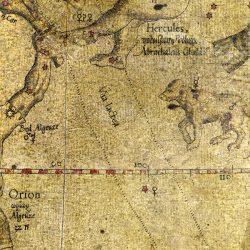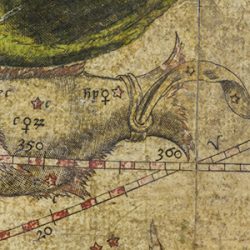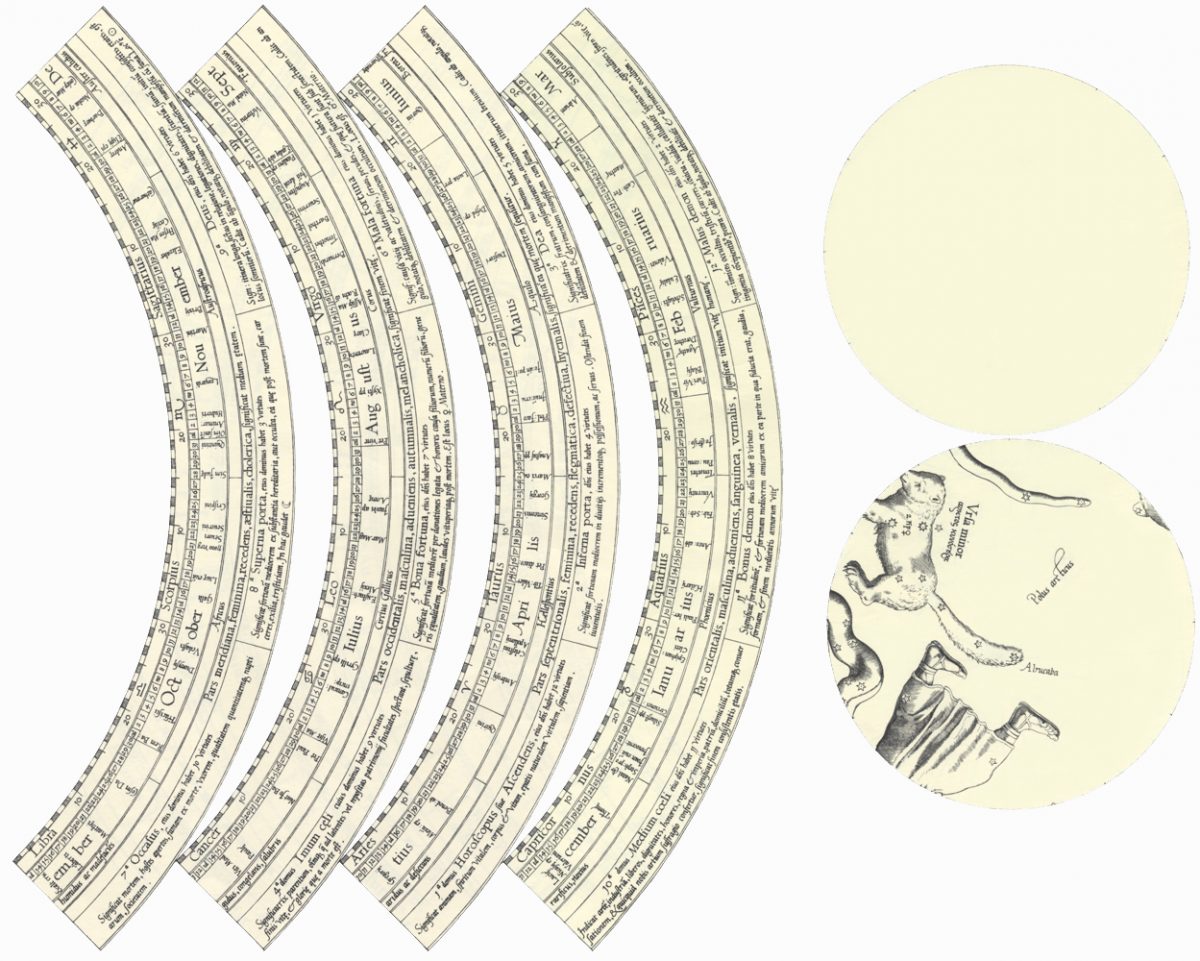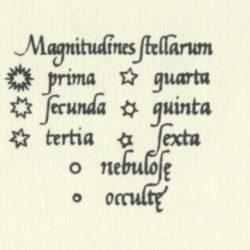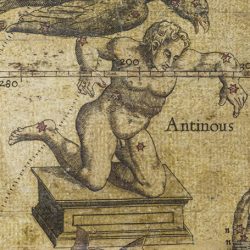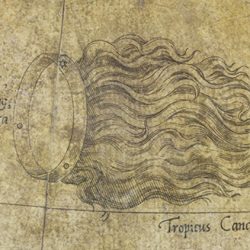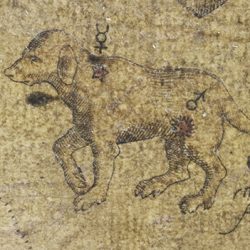Celestial sphere
Mercator’s celestial globe is surrounded by a brass meridian capped at the North Pole by a time dial (absent on the Lausanne copy) and a horizon ring indicating the main religious holidays and their dates along with the twelve signs of the Zodiac for astrological forecasts.
The sphere is covered with twelve gores extending to the 70th parallels, with each polar region capped by a round calotte. The celestial gores are aligned with their equatorial coordinates rather than the coordinates of their ecliptic. They meet at the celestial poles, which thus coincide with the axis of the globe’s base.
A large part of the area around the South Pole is blank, which is no surprise since it could not be seen from the latitudes of Europe. Thus, stars with a declination exceeding an absolute value of 66°30’ are missing. The constellations are named in Latin and Greek with an Arabic transliteration
- Virgo
- Pegasus
- Aquarius
Mercator’s globe shows a precession correction of 20°55’, in line with the theory of Nicolaus Copernicus. The equator and ecliptic are graduated with the degrees numbered on them by tens. The prime meridian runs just next to the tail of Pisces, shown below the wing of Pegasus.
- Via lactea (Milky Way)
- Via lactea (Milky Way)
- Pisces
The horizon ring, or rational horizon, is divided width-wise into two halves :
- the inner half, from inside to outside, indicates the ring’s division into degrees, the signs of the Zodiac, the days and months of the Roman calendar, the main religious holidays and the main winds in the different seasons ;
- the outer half indicates astrological forecasts, a trace of Arab astrology which still had its followers in the 16th century. Historians suppose that in including them Mercator must have made a concession to popular beliefs.
The relative shapes and dimensions of individual stars are shown in six different sizes along with the nebulae. A list of models is given near the top of the globe, above the constellation Gemini.
- Image from the celestial globe
- Image from the gores
Apart from the Milky Way and a large number of stars not belonging to symbolic asterisms, Mercator included nearly all of Ptolemy’s 1022 stars (according to J. van Raemdonck there are 934) spread across 51 constellations, compared with the 48 constellations commonly referred to since Antiquity. Among the additional representations we can find :
- Antinous, made up of twelve stars, situated in the southern hemisphere below the feet of Orion ;
- Lepus, made up of twelve stars, situated in the southern hemisphere below the feet of Orion ;
- Cincinnus (Caesaries, Berenicis crinis, Trica), made up of one star and two nebulae and located in the northern hemisphere under the tail of Ursa Major (the Plough). Coma Bernecis (Berenice’s Hair) has been on the official list of constellations since 1930 ;
- Canicula (Almogelsa, Alschere, Procyon) is situated in the northern hemisphere below the tail of Cancer, its correct position, contrary to the location in the southern hemisphere assigned to it later by Jocodus Hondius.
- Antinous
- Cincinnus (Berenice’s Hair)
- Canicula (Canis Minor)
